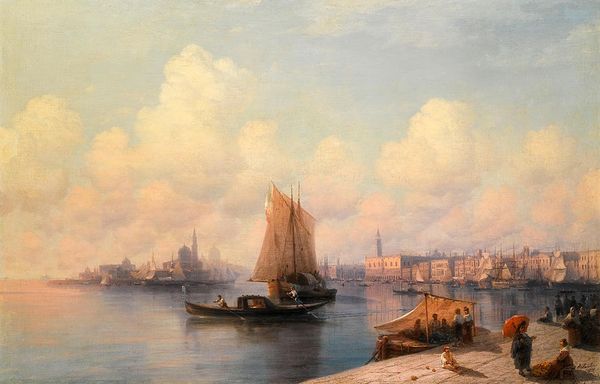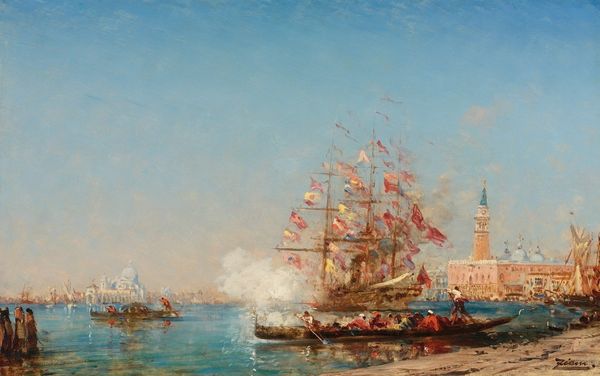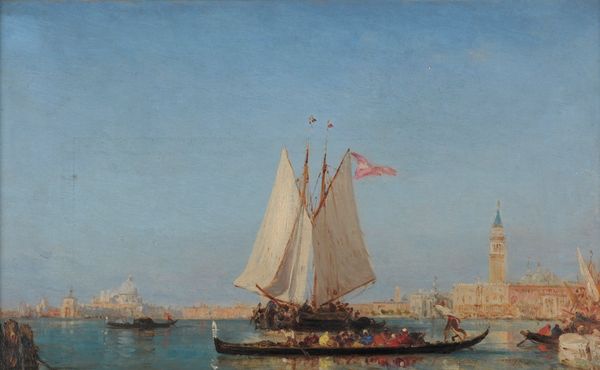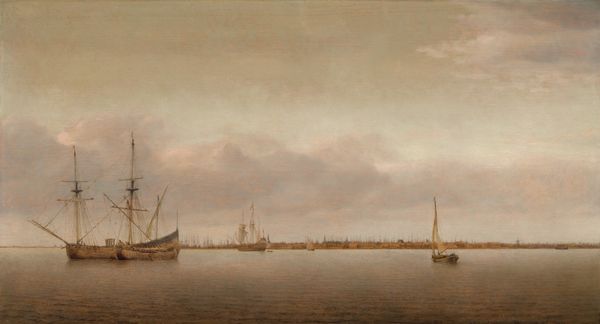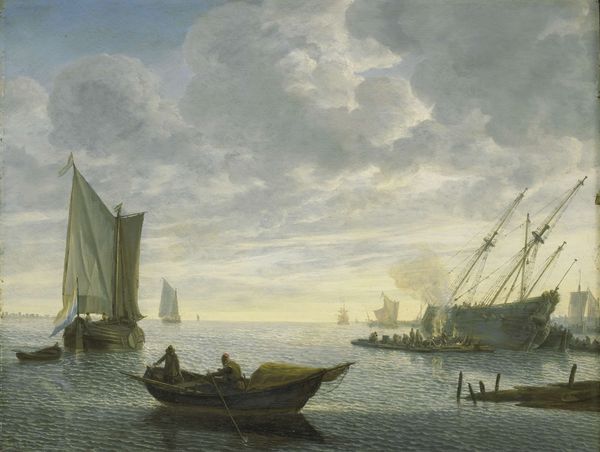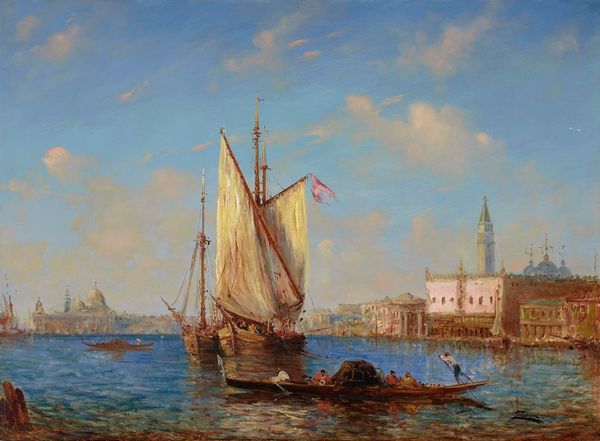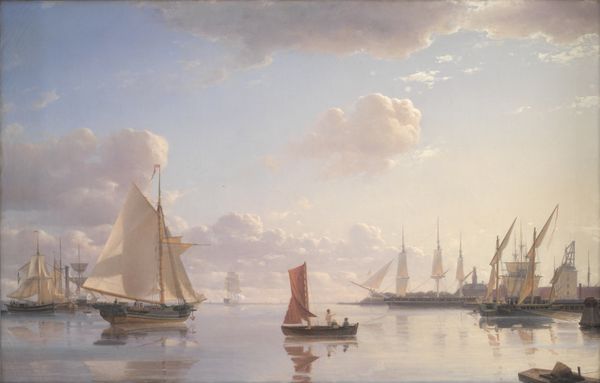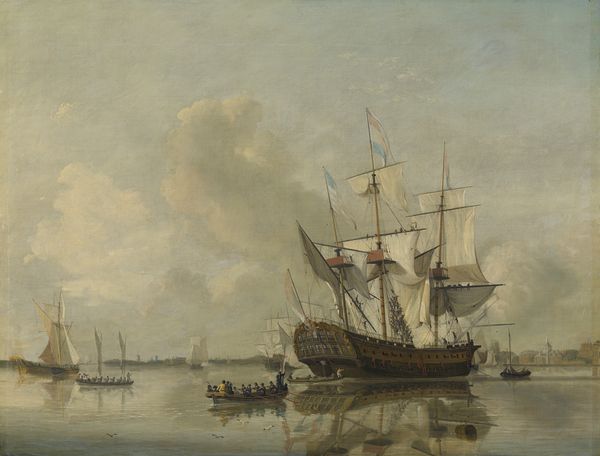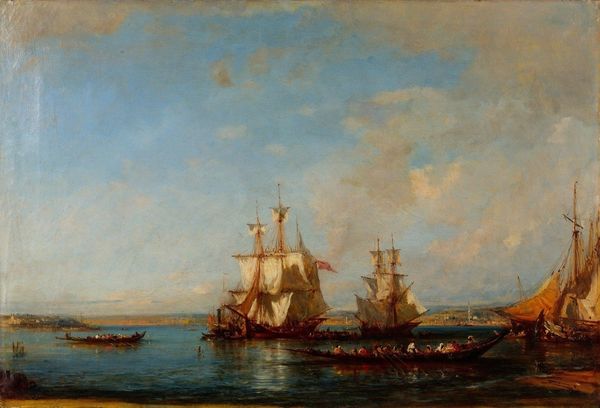
Copyright: Public domain
Editor: This is Anton Melbye’s "Laguna di Venezia," painted in 1878 with oil on canvas. There’s a serene feeling to this vista of the lagoon, almost dreamlike with its soft, diffused light. What stories can you tell me about this particular scene? Curator: This image offers an interesting view into the romanticization of Venice during the 19th century. Melbye captures the *idea* of Venice more than its gritty reality. Look at how the light obscures detail, turning buildings into soft shapes. The placement of the Italian flag atop the ship could suggest a burgeoning national identity being projected onto the city. How do you see the water represented here? Editor: The water looks almost like silk, and the way the boats are gliding on it, makes them look majestic! What was the relationship between Venice and its representation in painting at that time? Curator: Venice was a symbolic battleground, a space where different nations projected their ambitions. The Serenissima, as the city was historically known, had fallen, and its image became a canvas for artists and politicians alike. The genre of vedute—detailed city views—which previously emphasized topographical accuracy, started giving way to more subjective and emotionally charged portrayals. Do you think this romanticized view helped or hindered Venice’s cultural preservation? Editor: That's a thought-provoking point. Perhaps, it did both. The idealized images drew visitors, but might also have obscured the real needs and challenges facing the city and its inhabitants. Thank you, I hadn’t thought about that angle! Curator: Indeed. This painting becomes not just a landscape, but an artifact reflecting a complex cultural and political moment. I found the way in which this work blurs the boundaries between realism and romanticism fascinating. I’ll be sure to remember that in my future encounters with such works!
Comments
No comments
Be the first to comment and join the conversation on the ultimate creative platform.

